THE VENICE BIENNALE: CZECH AND SLOVAK REPUBLIC PAVILION
The heart of a giraffe in captivity is twelve kilos lighter tells the story of Lenka the giraffe, drawing on the history of Czechoslovakia’s acquisition of animals from the Global South. Interpreted through contemporary ecological and decolonial perspectives, Eva Kotátková’s project of the Czech and Slovak Republic Pavilion at the Venice Biennale builds a space for imagining a different way of relating to nature.
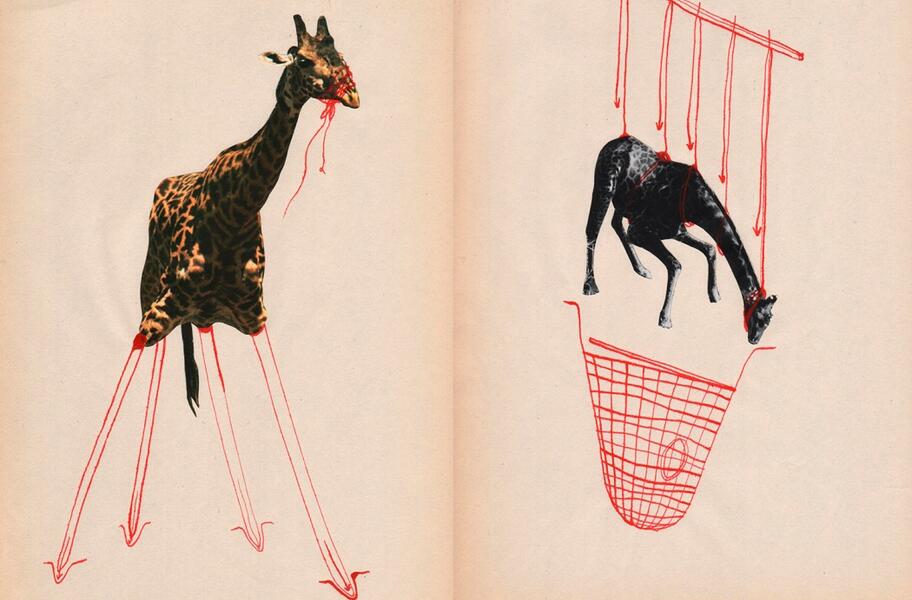
Lenka the Giraffe was captured in Kenya in 1954 and transported to Prague Zoo to become the very first Czechoslovak giraffe. She survived only two years in captivity, after which her body was donated to the National Museum in Prague where it was exhibited as a museum artefact until 2000. The heart of a giraffe in captivity is twelve kilos lighter, Eva Koťátková’s collaborative project for the Czech representation at the 60th Venice Biennale, reimagines Lenka’s story as a poetic, embodied encounter for the audience, invited collaborators and the artist, but also as a place of critical intervention in the relationship between institutions and the natural world.
Kot’átková’s collaborative project aims to question hierarchies, violence and extractive practices embedded in the way we encounter, view, and learn about animals, suggesting different modes of engagement where care, imagination and emotion are as important as historical narrative. Alongside the collaboration with artists and composers Himali Singh Soin and David Soin Tappeser (Hylozoic/Desires), Lenka’s story is also interpreted by children, educators and older people, who were Lenka’s contemporaries; with the installation conceived of as a collective body facilitating multiple forms of storytelling. With a contribution by the collective Gesturing Towards Decolonial Futures, The heart of a giraffe… builds a space where belonging can be formed through emotions, touch and ecological relations instead of fixed notions of identity and nation.
The project is curated by Hana Janečková, Assistant Professor of Contemporary Art at the Academy of Fine Arts, Prague. The commissioner of the project is Michal Novotný, Director of the Collection of Art after 1945 at the National Gallery Prague. It will be presented by the National Gallery Prague at the Czech and Slovak Pavilion in Giardini, alongside the artist Oto Hudec, who represents the Slovak Republic. His project Floating Arboretum, which also works with ecological narratives, is curated by Lýdia Pribyšová.
-
Pavilion of CZECH (REPUBLIC). The heart of a giraffe in captivity is twelve kilos lighter- 60th International Art Exhibition - La Biennale di Venezia. Photo Matteo de Mayda
-
Eva Kot'átková, from the series “Lenka (Unlearning Instinct)”, 2023. Mixed media on paper. Courtesy of Hunt Kastner, Prague.
-
Eva Kot'átková, from the series “Lenka (Unlearning Instinct)”, 2023. Mixed media on paper. Courtesy of Hunt Kastner, Prague.
-
Pavilion of CZECH (REPUBLIC). The heart of a giraffe in captivity is twelve kilos lighter- 60th International Art Exhibition - La Biennale di Venezia. Photo Matteo de Mayda
-
Pavilion of CZECH (REPUBLIC). The heart of a giraffe in captivity is twelve kilos lighter- 60th International Art Exhibition - La Biennale di Venezia. Photo Matteo de Mayda
-
Pavilion of CZECH (REPUBLIC). The heart of a giraffe in captivity is twelve kilos lighter- 60th International Art Exhibition - La Biennale di Venezia. Photo Matteo de Mayda
-
Pavilion of CZECH (REPUBLIC). The heart of a giraffe in captivity is twelve kilos lighter- 60th International Art Exhibition - La Biennale di Venezia. Photo Matteo de Mayda
As one of the most significant Czech artists of her generation, Eva Kot’átková has engaged with alternative educational models, embodied participation and the ways we relate to the natural world through critical institutional practice in contemporary art. Since the beginning of her career, she has built a powerful and complex oeuvre, both as artist, educator and activist drawing on a play, personal and embodied memory, future orientated radical imagination, social utopias and practices of care to ask what might constitute better worlds. She is a co-founder of the Institute of Anxiety, the magazine Krunýř (The Shell) and is engaged in several educational projects such as School of Imagination and Futuropolis. Her solo exhibitions have taken place at Nottingham Contemporary (2023); Arter (Istanbul, 2023); National Gallery Prague and CAPC Bordeaux (both 2022), Kunstverein Hamburg (2018); Pirelli Hangar Bicocca (Milan, 2018); Belvedere 21 (Vienna, 2017); Centre d’art contemporain (Pougues-les-Eaux, 2016) among others. Recently she has presented work at the Metropolitan Museum of Art (2018), the 16th Istanbul biennale (2019) and documenta fifteen (2022).
Related Topics
May interest you

The Japan Foundation, the commissioner of the Japan Pavilion presents Compose, a solo exhibition created by Yuko Mohri and curated by Sook-Kyung Lee at the 60th International Venice Biennale.
COMPOSE: JAPAN PAVILION AT THE VENICE BIENNALE
The Japan Foundation, the commissioner of the Japan Pavilion presents Compose, a solo exhibition created by Yuko Mohri and curated by Sook-Kyung Lee at the 60th International Venice Biennale.

The Japan Foundation, the commissioner of the Japan Pavilion presents Compose, a solo exhibition created by Yuko Mohri and curated by Sook-Kyung Lee at the 60th International Venice Biennale.
COMPOSE: JAPAN PAVILION AT THE VENICE BIENNALE
The Japan Foundation, the commissioner of the Japan Pavilion presents Compose, a solo exhibition created by Yuko Mohri and curated by Sook-Kyung Lee at the 60th International Venice Biennale.

Commissioned by Facundo de Almeida and curated by Elisa Valerio, the national pavilion of Uruguay presents the work of Eduardo Cardozo with the project Latent.
THE PAVILION OF URUGUAY AT THE 60TH VENICE BIENNALE
Commissioned by Facundo de Almeida and curated by Elisa Valerio, the national pavilion of Uruguay presents the work of Eduardo Cardozo with the project Latent.
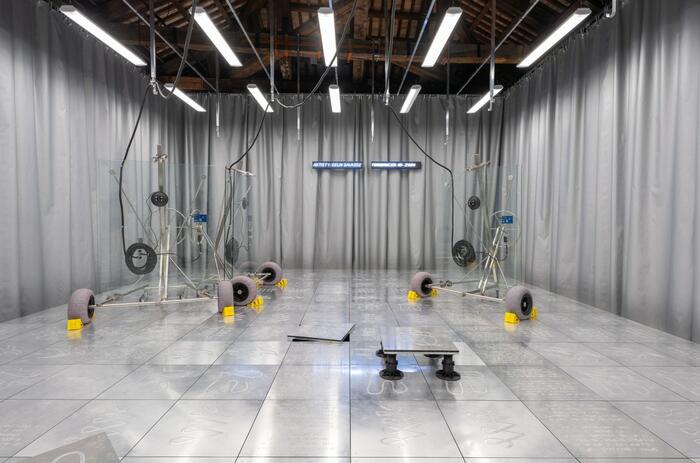
A Comparative Dialogue Act, a project by the Luxembourgish artist Andrea Mancini and the multidisciplinary collective Every Island is representing the Luxembourg Pavilion at the 60th Venice Biennale.
ANDREA MANCINI & EVERY ISLAND: LUXEMBOURG PAVILION AT THE VENICE BIENNALE
A Comparative Dialogue Act, a project by the Luxembourgish artist Andrea Mancini and the multidisciplinary collective Every Island is representing the Luxembourg Pavilion at the 60th Venice Biennale.

Malta’s pavilion at the 60th Venice Biennale presented artist Matthew Attard’s solo project, I Will Follow the Ship. Curated by Elyse Tonna and Sara Dolfi Agostini.
MALTA PAVILION AT THE VENICE BIENNALE 2024
Malta’s pavilion at the 60th Venice Biennale presented artist Matthew Attard’s solo project, I Will Follow the Ship. Curated by Elyse Tonna and Sara Dolfi Agostini.
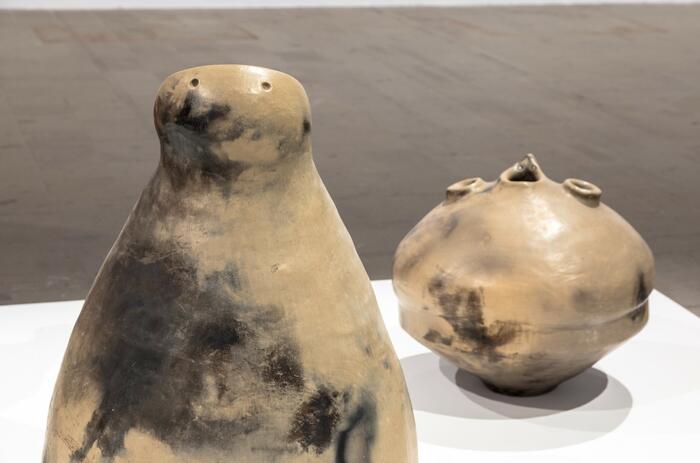
A week away from its official opening, the 60th edition of the Venice Biennale has generated press urbi et orbi. While some articles celebrated the irruption of the Global South in the Arsenale and the Giardini, others -truly devastating- reported on the disturbance and discomfort that the proposal of Adriano Pedrosa -the first Latin American to cure La Biennale in more than a century of existence- has awakened in the Western art system.
JULIA ISÍDREZ AND THE GLOBAL SOUTH AT THE 60TH VENICE BIENNIAL
A week away from its official opening, the 60th edition of the Venice Biennale has generated press urbi et orbi. While some articles celebrated the irruption of the Global South in the Arsenale and the Giardini, others -truly devastating- reported on the disturbance and discomfort that the proposal of Adriano Pedrosa -the first Latin American to cure La Biennale in more than a century of existence- has awakened in the Western art system.
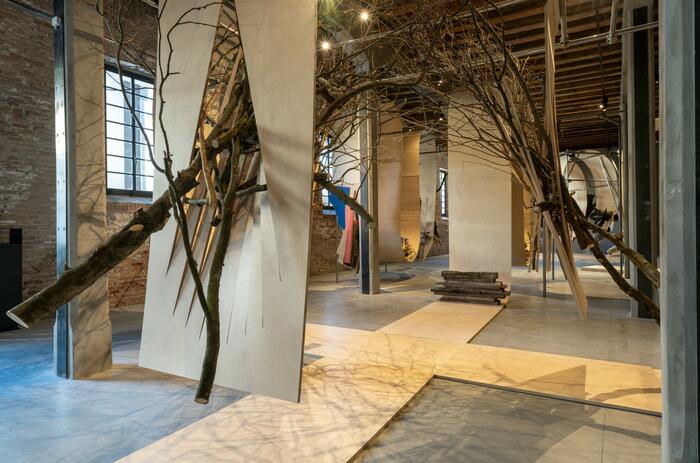
Ojalá se derrumben las puertas (Hopefully the Doors Will Fall Down) by artist Luciana Lamothe, curated by Sofía Dourron, is the installation presented by the Argentine Pavilion at the 60th International Art Exhibition of the Venice Biennale 2024.
THE ARGENTINE PAVILION IN THE VENICE BIENNALE
Ojalá se derrumben las puertas (Hopefully the Doors Will Fall Down) by artist Luciana Lamothe, curated by Sofía Dourron, is the installation presented by the Argentine Pavilion at the 60th International Art Exhibition of the Venice Biennale 2024.

For the 60th Venice Biennale, the Republic of Armenia presents Echo, a multi-dimensional multi-media installation project by Paris-based Armenian artist Nina Khemchyan.
“ECHO” BY NINCA KHEMCHYAN: ARMENIAN PAVILION IN THE VENICE BIENNALE
For the 60th Venice Biennale, the Republic of Armenia presents Echo, a multi-dimensional multi-media installation project by Paris-based Armenian artist Nina Khemchyan.
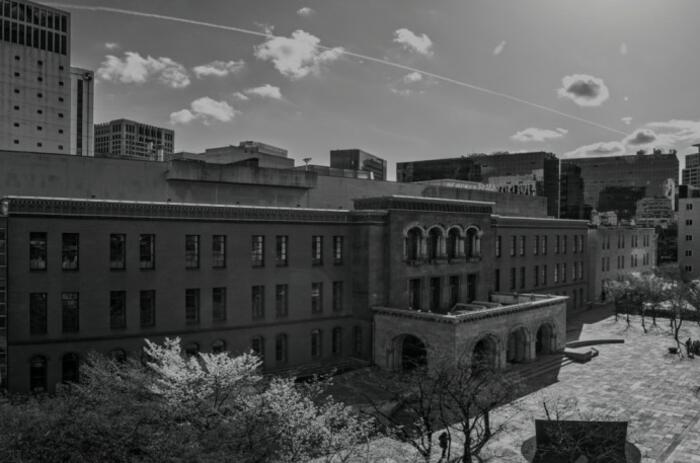
The Seoul Museum of Art is announcing an open call for the position of artistic director of the 13th Seoul Mediacity Biennale. Deadline to apply: July 28th, 2024.
13th SEOUL MEDIACITY BIENNALE CALLS FOR ARTISTIC DIRECTOR
The Seoul Museum of Art is announcing an open call for the position of artistic director of the 13th Seoul Mediacity Biennale. Deadline to apply: July 28th, 2024.
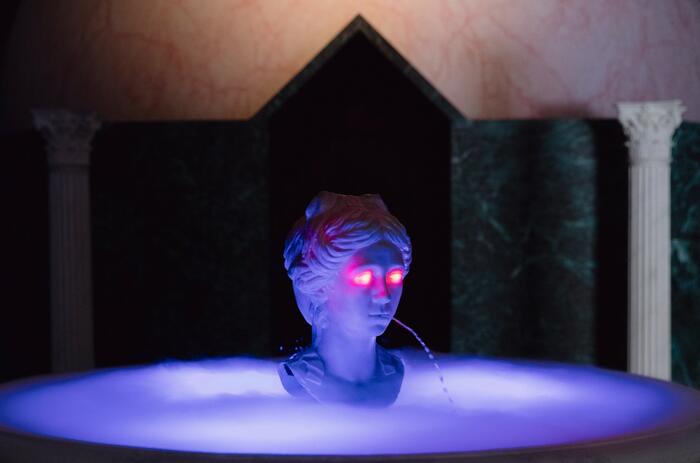
The Venice Bienanale’s Swiss Pavilion presents Super Superior Civilizations: an exhibition with the sixth and seventh chapters of Guerreiro do Divino Amor’s monumental “Superfictional World Atlas” saga: The Miracle of Helvetia and Roma Talismano. Curated by: Andrea Bellini.
THE SWISS PAVILION’S VENICE BIENNALE EXHIBITION BY GUERREIRO DO DIVINO AMOR
The Venice Bienanale’s Swiss Pavilion presents Super Superior Civilizations: an exhibition with the sixth and seventh chapters of Guerreiro do Divino Amor’s monumental “Superfictional World Atlas” saga: The Miracle of Helvetia and Roma Talismano. Curated by: Andrea Bellini.
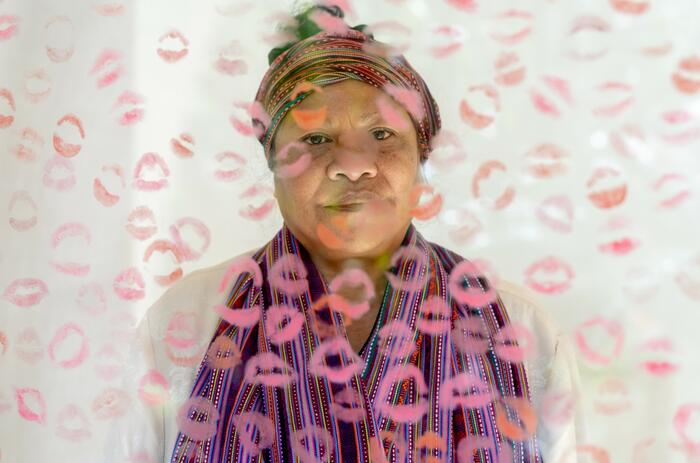
Maria Madeira is the artist representing Timor-Leste at the 60th International Venice Biennale. Timor-Leste’s inaugural pavilion coincides with the country’s 25th anniversary of independence. Commissioned by the Ministry of Youth, Sports, Arts and Culture, Democratic Republic of Timor-Leste and curated by Professor Natalie King OAM.
KISS AND DON’T TELL: TIMOR-LESTE IN THE VENICE BIENNALE
Maria Madeira is the artist representing Timor-Leste at the 60th International Venice Biennale. Timor-Leste’s inaugural pavilion coincides with the country’s 25th anniversary of independence. Commissioned by the Ministry of Youth, Sports, Arts and Culture, Democratic Republic of Timor-Leste and curated by Professor Natalie King OAM.
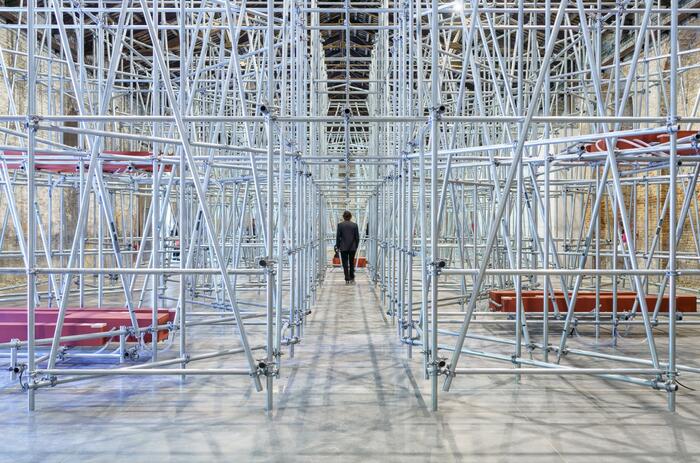
Due qui / To Hear is the project for the Italian Pavilion at the 60th Venice Biennale Curated by Luca Cerizza (with the assistance of Francesca Verga), it presents work that Massimo Bartolini has created in collaboration with several musicians (for the permanent installations) and writers (for the public program), employing the cooperative approach that is a hallmark of his practice.
DUE QUI/TO HEAR: ITALY’S PAVILION FOR THE VENICE BIENNALE
Due qui / To Hear is the project for the Italian Pavilion at the 60th Venice Biennale Curated by Luca Cerizza (with the assistance of Francesca Verga), it presents work that Massimo Bartolini has created in collaboration with several musicians (for the permanent installations) and writers (for the public program), employing the cooperative approach that is a hallmark of his practice.
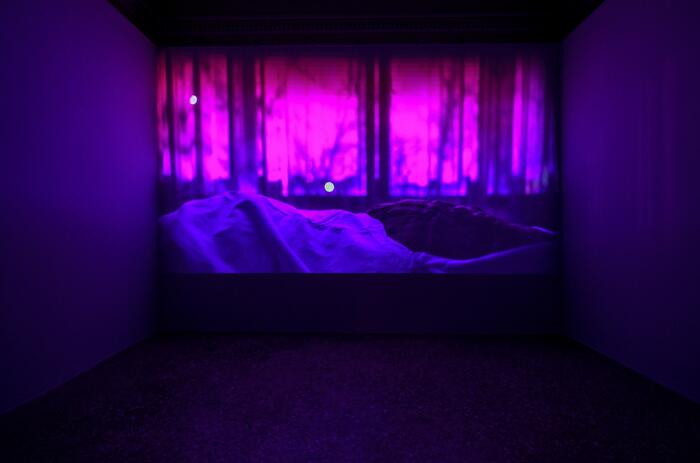
The Georgian Pavilion in the 60th Venice Biennale presented The Art of Seeing– States of Astronomy, a collaborative project presented by a team of Georgian and French curators and artists.
THE ART OF SEEING: GEORGIA’S PAVILION IN THE VENICE BIENNALE
The Georgian Pavilion in the 60th Venice Biennale presented The Art of Seeing– States of Astronomy, a collaborative project presented by a team of Georgian and French curators and artists.
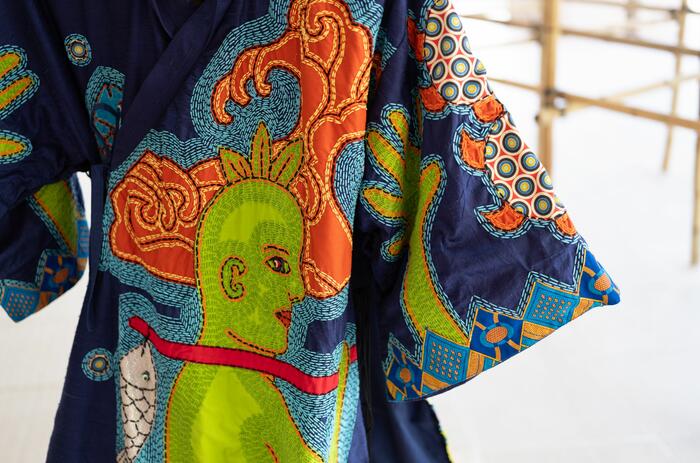
For the 60th International Art Exhibition – La Biennale di Venezia, the Nordic Countries Pavilion invites the audience to embark on a journey aboard a spectral dragon ship which occupies the light and open architecture of Sverre Fehn’s meditative masterpiece in the Giardini of the Biennale, Venice.
THE ALTERSEA OPERA: THE NORDIC COUNTRIES PAVILION'S PROPOSAL
For the 60th International Art Exhibition – La Biennale di Venezia, the Nordic Countries Pavilion invites the audience to embark on a journey aboard a spectral dragon ship which occupies the light and open architecture of Sverre Fehn’s meditative masterpiece in the Giardini of the Biennale, Venice.

The Japan Foundation, the commissioner of the Japan Pavilion presents Compose, a solo exhibition created by Yuko Mohri and curated by Sook-Kyung Lee at the 60th International Venice Biennale.
COMPOSE: JAPAN PAVILION AT THE VENICE BIENNALE
The Japan Foundation, the commissioner of the Japan Pavilion presents Compose, a solo exhibition created by Yuko Mohri and curated by Sook-Kyung Lee at the 60th International Venice Biennale.

Commissioned by Facundo de Almeida and curated by Elisa Valerio, the national pavilion of Uruguay presents the work of Eduardo Cardozo with the project Latent.
THE PAVILION OF URUGUAY AT THE 60TH VENICE BIENNALE
Commissioned by Facundo de Almeida and curated by Elisa Valerio, the national pavilion of Uruguay presents the work of Eduardo Cardozo with the project Latent.

A Comparative Dialogue Act, a project by the Luxembourgish artist Andrea Mancini and the multidisciplinary collective Every Island is representing the Luxembourg Pavilion at the 60th Venice Biennale.
ANDREA MANCINI & EVERY ISLAND: LUXEMBOURG PAVILION AT THE VENICE BIENNALE
A Comparative Dialogue Act, a project by the Luxembourgish artist Andrea Mancini and the multidisciplinary collective Every Island is representing the Luxembourg Pavilion at the 60th Venice Biennale.

Malta’s pavilion at the 60th Venice Biennale presented artist Matthew Attard’s solo project, I Will Follow the Ship. Curated by Elyse Tonna and Sara Dolfi Agostini.
MALTA PAVILION AT THE VENICE BIENNALE 2024
Malta’s pavilion at the 60th Venice Biennale presented artist Matthew Attard’s solo project, I Will Follow the Ship. Curated by Elyse Tonna and Sara Dolfi Agostini.

A week away from its official opening, the 60th edition of the Venice Biennale has generated press urbi et orbi. While some articles celebrated the irruption of the Global South in the Arsenale and the Giardini, others -truly devastating- reported on the disturbance and discomfort that the proposal of Adriano Pedrosa -the first Latin American to cure La Biennale in more than a century of existence- has awakened in the Western art system.
JULIA ISÍDREZ AND THE GLOBAL SOUTH AT THE 60TH VENICE BIENNIAL
A week away from its official opening, the 60th edition of the Venice Biennale has generated press urbi et orbi. While some articles celebrated the irruption of the Global South in the Arsenale and the Giardini, others -truly devastating- reported on the disturbance and discomfort that the proposal of Adriano Pedrosa -the first Latin American to cure La Biennale in more than a century of existence- has awakened in the Western art system.

Ojalá se derrumben las puertas (Hopefully the Doors Will Fall Down) by artist Luciana Lamothe, curated by Sofía Dourron, is the installation presented by the Argentine Pavilion at the 60th International Art Exhibition of the Venice Biennale 2024.
THE ARGENTINE PAVILION IN THE VENICE BIENNALE
Ojalá se derrumben las puertas (Hopefully the Doors Will Fall Down) by artist Luciana Lamothe, curated by Sofía Dourron, is the installation presented by the Argentine Pavilion at the 60th International Art Exhibition of the Venice Biennale 2024.

For the 60th Venice Biennale, the Republic of Armenia presents Echo, a multi-dimensional multi-media installation project by Paris-based Armenian artist Nina Khemchyan.
“ECHO” BY NINCA KHEMCHYAN: ARMENIAN PAVILION IN THE VENICE BIENNALE
For the 60th Venice Biennale, the Republic of Armenia presents Echo, a multi-dimensional multi-media installation project by Paris-based Armenian artist Nina Khemchyan.

The Seoul Museum of Art is announcing an open call for the position of artistic director of the 13th Seoul Mediacity Biennale. Deadline to apply: July 28th, 2024.
13th SEOUL MEDIACITY BIENNALE CALLS FOR ARTISTIC DIRECTOR
The Seoul Museum of Art is announcing an open call for the position of artistic director of the 13th Seoul Mediacity Biennale. Deadline to apply: July 28th, 2024.

The Venice Bienanale’s Swiss Pavilion presents Super Superior Civilizations: an exhibition with the sixth and seventh chapters of Guerreiro do Divino Amor’s monumental “Superfictional World Atlas” saga: The Miracle of Helvetia and Roma Talismano. Curated by: Andrea Bellini.
THE SWISS PAVILION’S VENICE BIENNALE EXHIBITION BY GUERREIRO DO DIVINO AMOR
The Venice Bienanale’s Swiss Pavilion presents Super Superior Civilizations: an exhibition with the sixth and seventh chapters of Guerreiro do Divino Amor’s monumental “Superfictional World Atlas” saga: The Miracle of Helvetia and Roma Talismano. Curated by: Andrea Bellini.

Maria Madeira is the artist representing Timor-Leste at the 60th International Venice Biennale. Timor-Leste’s inaugural pavilion coincides with the country’s 25th anniversary of independence. Commissioned by the Ministry of Youth, Sports, Arts and Culture, Democratic Republic of Timor-Leste and curated by Professor Natalie King OAM.
KISS AND DON’T TELL: TIMOR-LESTE IN THE VENICE BIENNALE
Maria Madeira is the artist representing Timor-Leste at the 60th International Venice Biennale. Timor-Leste’s inaugural pavilion coincides with the country’s 25th anniversary of independence. Commissioned by the Ministry of Youth, Sports, Arts and Culture, Democratic Republic of Timor-Leste and curated by Professor Natalie King OAM.

Due qui / To Hear is the project for the Italian Pavilion at the 60th Venice Biennale Curated by Luca Cerizza (with the assistance of Francesca Verga), it presents work that Massimo Bartolini has created in collaboration with several musicians (for the permanent installations) and writers (for the public program), employing the cooperative approach that is a hallmark of his practice.
DUE QUI/TO HEAR: ITALY’S PAVILION FOR THE VENICE BIENNALE
Due qui / To Hear is the project for the Italian Pavilion at the 60th Venice Biennale Curated by Luca Cerizza (with the assistance of Francesca Verga), it presents work that Massimo Bartolini has created in collaboration with several musicians (for the permanent installations) and writers (for the public program), employing the cooperative approach that is a hallmark of his practice.

The Georgian Pavilion in the 60th Venice Biennale presented The Art of Seeing– States of Astronomy, a collaborative project presented by a team of Georgian and French curators and artists.
THE ART OF SEEING: GEORGIA’S PAVILION IN THE VENICE BIENNALE
The Georgian Pavilion in the 60th Venice Biennale presented The Art of Seeing– States of Astronomy, a collaborative project presented by a team of Georgian and French curators and artists.

For the 60th International Art Exhibition – La Biennale di Venezia, the Nordic Countries Pavilion invites the audience to embark on a journey aboard a spectral dragon ship which occupies the light and open architecture of Sverre Fehn’s meditative masterpiece in the Giardini of the Biennale, Venice.
THE ALTERSEA OPERA: THE NORDIC COUNTRIES PAVILION'S PROPOSAL
For the 60th International Art Exhibition – La Biennale di Venezia, the Nordic Countries Pavilion invites the audience to embark on a journey aboard a spectral dragon ship which occupies the light and open architecture of Sverre Fehn’s meditative masterpiece in the Giardini of the Biennale, Venice.

The Japan Foundation, the commissioner of the Japan Pavilion presents Compose, a solo exhibition created by Yuko Mohri and curated by Sook-Kyung Lee at the 60th International Venice Biennale.
COMPOSE: JAPAN PAVILION AT THE VENICE BIENNALE
The Japan Foundation, the commissioner of the Japan Pavilion presents Compose, a solo exhibition created by Yuko Mohri and curated by Sook-Kyung Lee at the 60th International Venice Biennale.

Commissioned by Facundo de Almeida and curated by Elisa Valerio, the national pavilion of Uruguay presents the work of Eduardo Cardozo with the project Latent.
THE PAVILION OF URUGUAY AT THE 60TH VENICE BIENNALE
Commissioned by Facundo de Almeida and curated by Elisa Valerio, the national pavilion of Uruguay presents the work of Eduardo Cardozo with the project Latent.

A Comparative Dialogue Act, a project by the Luxembourgish artist Andrea Mancini and the multidisciplinary collective Every Island is representing the Luxembourg Pavilion at the 60th Venice Biennale.
ANDREA MANCINI & EVERY ISLAND: LUXEMBOURG PAVILION AT THE VENICE BIENNALE
A Comparative Dialogue Act, a project by the Luxembourgish artist Andrea Mancini and the multidisciplinary collective Every Island is representing the Luxembourg Pavilion at the 60th Venice Biennale.

Malta’s pavilion at the 60th Venice Biennale presented artist Matthew Attard’s solo project, I Will Follow the Ship. Curated by Elyse Tonna and Sara Dolfi Agostini.
MALTA PAVILION AT THE VENICE BIENNALE 2024
Malta’s pavilion at the 60th Venice Biennale presented artist Matthew Attard’s solo project, I Will Follow the Ship. Curated by Elyse Tonna and Sara Dolfi Agostini.

A week away from its official opening, the 60th edition of the Venice Biennale has generated press urbi et orbi. While some articles celebrated the irruption of the Global South in the Arsenale and the Giardini, others -truly devastating- reported on the disturbance and discomfort that the proposal of Adriano Pedrosa -the first Latin American to cure La Biennale in more than a century of existence- has awakened in the Western art system.
JULIA ISÍDREZ AND THE GLOBAL SOUTH AT THE 60TH VENICE BIENNIAL
A week away from its official opening, the 60th edition of the Venice Biennale has generated press urbi et orbi. While some articles celebrated the irruption of the Global South in the Arsenale and the Giardini, others -truly devastating- reported on the disturbance and discomfort that the proposal of Adriano Pedrosa -the first Latin American to cure La Biennale in more than a century of existence- has awakened in the Western art system.

Ojalá se derrumben las puertas (Hopefully the Doors Will Fall Down) by artist Luciana Lamothe, curated by Sofía Dourron, is the installation presented by the Argentine Pavilion at the 60th International Art Exhibition of the Venice Biennale 2024.
THE ARGENTINE PAVILION IN THE VENICE BIENNALE
Ojalá se derrumben las puertas (Hopefully the Doors Will Fall Down) by artist Luciana Lamothe, curated by Sofía Dourron, is the installation presented by the Argentine Pavilion at the 60th International Art Exhibition of the Venice Biennale 2024.

For the 60th Venice Biennale, the Republic of Armenia presents Echo, a multi-dimensional multi-media installation project by Paris-based Armenian artist Nina Khemchyan.
“ECHO” BY NINCA KHEMCHYAN: ARMENIAN PAVILION IN THE VENICE BIENNALE
For the 60th Venice Biennale, the Republic of Armenia presents Echo, a multi-dimensional multi-media installation project by Paris-based Armenian artist Nina Khemchyan.

The Seoul Museum of Art is announcing an open call for the position of artistic director of the 13th Seoul Mediacity Biennale. Deadline to apply: July 28th, 2024.
13th SEOUL MEDIACITY BIENNALE CALLS FOR ARTISTIC DIRECTOR
The Seoul Museum of Art is announcing an open call for the position of artistic director of the 13th Seoul Mediacity Biennale. Deadline to apply: July 28th, 2024.

The Venice Bienanale’s Swiss Pavilion presents Super Superior Civilizations: an exhibition with the sixth and seventh chapters of Guerreiro do Divino Amor’s monumental “Superfictional World Atlas” saga: The Miracle of Helvetia and Roma Talismano. Curated by: Andrea Bellini.
THE SWISS PAVILION’S VENICE BIENNALE EXHIBITION BY GUERREIRO DO DIVINO AMOR
The Venice Bienanale’s Swiss Pavilion presents Super Superior Civilizations: an exhibition with the sixth and seventh chapters of Guerreiro do Divino Amor’s monumental “Superfictional World Atlas” saga: The Miracle of Helvetia and Roma Talismano. Curated by: Andrea Bellini.

Maria Madeira is the artist representing Timor-Leste at the 60th International Venice Biennale. Timor-Leste’s inaugural pavilion coincides with the country’s 25th anniversary of independence. Commissioned by the Ministry of Youth, Sports, Arts and Culture, Democratic Republic of Timor-Leste and curated by Professor Natalie King OAM.
KISS AND DON’T TELL: TIMOR-LESTE IN THE VENICE BIENNALE
Maria Madeira is the artist representing Timor-Leste at the 60th International Venice Biennale. Timor-Leste’s inaugural pavilion coincides with the country’s 25th anniversary of independence. Commissioned by the Ministry of Youth, Sports, Arts and Culture, Democratic Republic of Timor-Leste and curated by Professor Natalie King OAM.

Due qui / To Hear is the project for the Italian Pavilion at the 60th Venice Biennale Curated by Luca Cerizza (with the assistance of Francesca Verga), it presents work that Massimo Bartolini has created in collaboration with several musicians (for the permanent installations) and writers (for the public program), employing the cooperative approach that is a hallmark of his practice.
DUE QUI/TO HEAR: ITALY’S PAVILION FOR THE VENICE BIENNALE
Due qui / To Hear is the project for the Italian Pavilion at the 60th Venice Biennale Curated by Luca Cerizza (with the assistance of Francesca Verga), it presents work that Massimo Bartolini has created in collaboration with several musicians (for the permanent installations) and writers (for the public program), employing the cooperative approach that is a hallmark of his practice.

The Georgian Pavilion in the 60th Venice Biennale presented The Art of Seeing– States of Astronomy, a collaborative project presented by a team of Georgian and French curators and artists.
THE ART OF SEEING: GEORGIA’S PAVILION IN THE VENICE BIENNALE
The Georgian Pavilion in the 60th Venice Biennale presented The Art of Seeing– States of Astronomy, a collaborative project presented by a team of Georgian and French curators and artists.

For the 60th International Art Exhibition – La Biennale di Venezia, the Nordic Countries Pavilion invites the audience to embark on a journey aboard a spectral dragon ship which occupies the light and open architecture of Sverre Fehn’s meditative masterpiece in the Giardini of the Biennale, Venice.
THE ALTERSEA OPERA: THE NORDIC COUNTRIES PAVILION'S PROPOSAL
For the 60th International Art Exhibition – La Biennale di Venezia, the Nordic Countries Pavilion invites the audience to embark on a journey aboard a spectral dragon ship which occupies the light and open architecture of Sverre Fehn’s meditative masterpiece in the Giardini of the Biennale, Venice.

The Japan Foundation, the commissioner of the Japan Pavilion presents Compose, a solo exhibition created by Yuko Mohri and curated by Sook-Kyung Lee at the 60th International Venice Biennale.
COMPOSE: JAPAN PAVILION AT THE VENICE BIENNALE
The Japan Foundation, the commissioner of the Japan Pavilion presents Compose, a solo exhibition created by Yuko Mohri and curated by Sook-Kyung Lee at the 60th International Venice Biennale.

Commissioned by Facundo de Almeida and curated by Elisa Valerio, the national pavilion of Uruguay presents the work of Eduardo Cardozo with the project Latent.
THE PAVILION OF URUGUAY AT THE 60TH VENICE BIENNALE
Commissioned by Facundo de Almeida and curated by Elisa Valerio, the national pavilion of Uruguay presents the work of Eduardo Cardozo with the project Latent.

A Comparative Dialogue Act, a project by the Luxembourgish artist Andrea Mancini and the multidisciplinary collective Every Island is representing the Luxembourg Pavilion at the 60th Venice Biennale.
ANDREA MANCINI & EVERY ISLAND: LUXEMBOURG PAVILION AT THE VENICE BIENNALE
A Comparative Dialogue Act, a project by the Luxembourgish artist Andrea Mancini and the multidisciplinary collective Every Island is representing the Luxembourg Pavilion at the 60th Venice Biennale.

Malta’s pavilion at the 60th Venice Biennale presented artist Matthew Attard’s solo project, I Will Follow the Ship. Curated by Elyse Tonna and Sara Dolfi Agostini.
MALTA PAVILION AT THE VENICE BIENNALE 2024
Malta’s pavilion at the 60th Venice Biennale presented artist Matthew Attard’s solo project, I Will Follow the Ship. Curated by Elyse Tonna and Sara Dolfi Agostini.

A week away from its official opening, the 60th edition of the Venice Biennale has generated press urbi et orbi. While some articles celebrated the irruption of the Global South in the Arsenale and the Giardini, others -truly devastating- reported on the disturbance and discomfort that the proposal of Adriano Pedrosa -the first Latin American to cure La Biennale in more than a century of existence- has awakened in the Western art system.
JULIA ISÍDREZ AND THE GLOBAL SOUTH AT THE 60TH VENICE BIENNIAL
A week away from its official opening, the 60th edition of the Venice Biennale has generated press urbi et orbi. While some articles celebrated the irruption of the Global South in the Arsenale and the Giardini, others -truly devastating- reported on the disturbance and discomfort that the proposal of Adriano Pedrosa -the first Latin American to cure La Biennale in more than a century of existence- has awakened in the Western art system.

Ojalá se derrumben las puertas (Hopefully the Doors Will Fall Down) by artist Luciana Lamothe, curated by Sofía Dourron, is the installation presented by the Argentine Pavilion at the 60th International Art Exhibition of the Venice Biennale 2024.
THE ARGENTINE PAVILION IN THE VENICE BIENNALE
Ojalá se derrumben las puertas (Hopefully the Doors Will Fall Down) by artist Luciana Lamothe, curated by Sofía Dourron, is the installation presented by the Argentine Pavilion at the 60th International Art Exhibition of the Venice Biennale 2024.

For the 60th Venice Biennale, the Republic of Armenia presents Echo, a multi-dimensional multi-media installation project by Paris-based Armenian artist Nina Khemchyan.
“ECHO” BY NINCA KHEMCHYAN: ARMENIAN PAVILION IN THE VENICE BIENNALE
For the 60th Venice Biennale, the Republic of Armenia presents Echo, a multi-dimensional multi-media installation project by Paris-based Armenian artist Nina Khemchyan.

The Seoul Museum of Art is announcing an open call for the position of artistic director of the 13th Seoul Mediacity Biennale. Deadline to apply: July 28th, 2024.
13th SEOUL MEDIACITY BIENNALE CALLS FOR ARTISTIC DIRECTOR
The Seoul Museum of Art is announcing an open call for the position of artistic director of the 13th Seoul Mediacity Biennale. Deadline to apply: July 28th, 2024.

The Venice Bienanale’s Swiss Pavilion presents Super Superior Civilizations: an exhibition with the sixth and seventh chapters of Guerreiro do Divino Amor’s monumental “Superfictional World Atlas” saga: The Miracle of Helvetia and Roma Talismano. Curated by: Andrea Bellini.
THE SWISS PAVILION’S VENICE BIENNALE EXHIBITION BY GUERREIRO DO DIVINO AMOR
The Venice Bienanale’s Swiss Pavilion presents Super Superior Civilizations: an exhibition with the sixth and seventh chapters of Guerreiro do Divino Amor’s monumental “Superfictional World Atlas” saga: The Miracle of Helvetia and Roma Talismano. Curated by: Andrea Bellini.

Maria Madeira is the artist representing Timor-Leste at the 60th International Venice Biennale. Timor-Leste’s inaugural pavilion coincides with the country’s 25th anniversary of independence. Commissioned by the Ministry of Youth, Sports, Arts and Culture, Democratic Republic of Timor-Leste and curated by Professor Natalie King OAM.
KISS AND DON’T TELL: TIMOR-LESTE IN THE VENICE BIENNALE
Maria Madeira is the artist representing Timor-Leste at the 60th International Venice Biennale. Timor-Leste’s inaugural pavilion coincides with the country’s 25th anniversary of independence. Commissioned by the Ministry of Youth, Sports, Arts and Culture, Democratic Republic of Timor-Leste and curated by Professor Natalie King OAM.

Due qui / To Hear is the project for the Italian Pavilion at the 60th Venice Biennale Curated by Luca Cerizza (with the assistance of Francesca Verga), it presents work that Massimo Bartolini has created in collaboration with several musicians (for the permanent installations) and writers (for the public program), employing the cooperative approach that is a hallmark of his practice.
DUE QUI/TO HEAR: ITALY’S PAVILION FOR THE VENICE BIENNALE
Due qui / To Hear is the project for the Italian Pavilion at the 60th Venice Biennale Curated by Luca Cerizza (with the assistance of Francesca Verga), it presents work that Massimo Bartolini has created in collaboration with several musicians (for the permanent installations) and writers (for the public program), employing the cooperative approach that is a hallmark of his practice.

The Georgian Pavilion in the 60th Venice Biennale presented The Art of Seeing– States of Astronomy, a collaborative project presented by a team of Georgian and French curators and artists.
THE ART OF SEEING: GEORGIA’S PAVILION IN THE VENICE BIENNALE
The Georgian Pavilion in the 60th Venice Biennale presented The Art of Seeing– States of Astronomy, a collaborative project presented by a team of Georgian and French curators and artists.

For the 60th International Art Exhibition – La Biennale di Venezia, the Nordic Countries Pavilion invites the audience to embark on a journey aboard a spectral dragon ship which occupies the light and open architecture of Sverre Fehn’s meditative masterpiece in the Giardini of the Biennale, Venice.
THE ALTERSEA OPERA: THE NORDIC COUNTRIES PAVILION'S PROPOSAL
For the 60th International Art Exhibition – La Biennale di Venezia, the Nordic Countries Pavilion invites the audience to embark on a journey aboard a spectral dragon ship which occupies the light and open architecture of Sverre Fehn’s meditative masterpiece in the Giardini of the Biennale, Venice.

The Japan Foundation, the commissioner of the Japan Pavilion presents Compose, a solo exhibition created by Yuko Mohri and curated by Sook-Kyung Lee at the 60th International Venice Biennale.
COMPOSE: JAPAN PAVILION AT THE VENICE BIENNALE
The Japan Foundation, the commissioner of the Japan Pavilion presents Compose, a solo exhibition created by Yuko Mohri and curated by Sook-Kyung Lee at the 60th International Venice Biennale.

Commissioned by Facundo de Almeida and curated by Elisa Valerio, the national pavilion of Uruguay presents the work of Eduardo Cardozo with the project Latent.
THE PAVILION OF URUGUAY AT THE 60TH VENICE BIENNALE
Commissioned by Facundo de Almeida and curated by Elisa Valerio, the national pavilion of Uruguay presents the work of Eduardo Cardozo with the project Latent.

A Comparative Dialogue Act, a project by the Luxembourgish artist Andrea Mancini and the multidisciplinary collective Every Island is representing the Luxembourg Pavilion at the 60th Venice Biennale.
ANDREA MANCINI & EVERY ISLAND: LUXEMBOURG PAVILION AT THE VENICE BIENNALE
A Comparative Dialogue Act, a project by the Luxembourgish artist Andrea Mancini and the multidisciplinary collective Every Island is representing the Luxembourg Pavilion at the 60th Venice Biennale.

Malta’s pavilion at the 60th Venice Biennale presented artist Matthew Attard’s solo project, I Will Follow the Ship. Curated by Elyse Tonna and Sara Dolfi Agostini.
MALTA PAVILION AT THE VENICE BIENNALE 2024
Malta’s pavilion at the 60th Venice Biennale presented artist Matthew Attard’s solo project, I Will Follow the Ship. Curated by Elyse Tonna and Sara Dolfi Agostini.

A week away from its official opening, the 60th edition of the Venice Biennale has generated press urbi et orbi. While some articles celebrated the irruption of the Global South in the Arsenale and the Giardini, others -truly devastating- reported on the disturbance and discomfort that the proposal of Adriano Pedrosa -the first Latin American to cure La Biennale in more than a century of existence- has awakened in the Western art system.
JULIA ISÍDREZ AND THE GLOBAL SOUTH AT THE 60TH VENICE BIENNIAL
A week away from its official opening, the 60th edition of the Venice Biennale has generated press urbi et orbi. While some articles celebrated the irruption of the Global South in the Arsenale and the Giardini, others -truly devastating- reported on the disturbance and discomfort that the proposal of Adriano Pedrosa -the first Latin American to cure La Biennale in more than a century of existence- has awakened in the Western art system.

Ojalá se derrumben las puertas (Hopefully the Doors Will Fall Down) by artist Luciana Lamothe, curated by Sofía Dourron, is the installation presented by the Argentine Pavilion at the 60th International Art Exhibition of the Venice Biennale 2024.
THE ARGENTINE PAVILION IN THE VENICE BIENNALE
Ojalá se derrumben las puertas (Hopefully the Doors Will Fall Down) by artist Luciana Lamothe, curated by Sofía Dourron, is the installation presented by the Argentine Pavilion at the 60th International Art Exhibition of the Venice Biennale 2024.

For the 60th Venice Biennale, the Republic of Armenia presents Echo, a multi-dimensional multi-media installation project by Paris-based Armenian artist Nina Khemchyan.
“ECHO” BY NINCA KHEMCHYAN: ARMENIAN PAVILION IN THE VENICE BIENNALE
For the 60th Venice Biennale, the Republic of Armenia presents Echo, a multi-dimensional multi-media installation project by Paris-based Armenian artist Nina Khemchyan.

The Seoul Museum of Art is announcing an open call for the position of artistic director of the 13th Seoul Mediacity Biennale. Deadline to apply: July 28th, 2024.
13th SEOUL MEDIACITY BIENNALE CALLS FOR ARTISTIC DIRECTOR
The Seoul Museum of Art is announcing an open call for the position of artistic director of the 13th Seoul Mediacity Biennale. Deadline to apply: July 28th, 2024.

The Venice Bienanale’s Swiss Pavilion presents Super Superior Civilizations: an exhibition with the sixth and seventh chapters of Guerreiro do Divino Amor’s monumental “Superfictional World Atlas” saga: The Miracle of Helvetia and Roma Talismano. Curated by: Andrea Bellini.
THE SWISS PAVILION’S VENICE BIENNALE EXHIBITION BY GUERREIRO DO DIVINO AMOR
The Venice Bienanale’s Swiss Pavilion presents Super Superior Civilizations: an exhibition with the sixth and seventh chapters of Guerreiro do Divino Amor’s monumental “Superfictional World Atlas” saga: The Miracle of Helvetia and Roma Talismano. Curated by: Andrea Bellini.

Maria Madeira is the artist representing Timor-Leste at the 60th International Venice Biennale. Timor-Leste’s inaugural pavilion coincides with the country’s 25th anniversary of independence. Commissioned by the Ministry of Youth, Sports, Arts and Culture, Democratic Republic of Timor-Leste and curated by Professor Natalie King OAM.
KISS AND DON’T TELL: TIMOR-LESTE IN THE VENICE BIENNALE
Maria Madeira is the artist representing Timor-Leste at the 60th International Venice Biennale. Timor-Leste’s inaugural pavilion coincides with the country’s 25th anniversary of independence. Commissioned by the Ministry of Youth, Sports, Arts and Culture, Democratic Republic of Timor-Leste and curated by Professor Natalie King OAM.

Due qui / To Hear is the project for the Italian Pavilion at the 60th Venice Biennale Curated by Luca Cerizza (with the assistance of Francesca Verga), it presents work that Massimo Bartolini has created in collaboration with several musicians (for the permanent installations) and writers (for the public program), employing the cooperative approach that is a hallmark of his practice.
DUE QUI/TO HEAR: ITALY’S PAVILION FOR THE VENICE BIENNALE
Due qui / To Hear is the project for the Italian Pavilion at the 60th Venice Biennale Curated by Luca Cerizza (with the assistance of Francesca Verga), it presents work that Massimo Bartolini has created in collaboration with several musicians (for the permanent installations) and writers (for the public program), employing the cooperative approach that is a hallmark of his practice.

The Georgian Pavilion in the 60th Venice Biennale presented The Art of Seeing– States of Astronomy, a collaborative project presented by a team of Georgian and French curators and artists.
THE ART OF SEEING: GEORGIA’S PAVILION IN THE VENICE BIENNALE
The Georgian Pavilion in the 60th Venice Biennale presented The Art of Seeing– States of Astronomy, a collaborative project presented by a team of Georgian and French curators and artists.

For the 60th International Art Exhibition – La Biennale di Venezia, the Nordic Countries Pavilion invites the audience to embark on a journey aboard a spectral dragon ship which occupies the light and open architecture of Sverre Fehn’s meditative masterpiece in the Giardini of the Biennale, Venice.
THE ALTERSEA OPERA: THE NORDIC COUNTRIES PAVILION'S PROPOSAL
For the 60th International Art Exhibition – La Biennale di Venezia, the Nordic Countries Pavilion invites the audience to embark on a journey aboard a spectral dragon ship which occupies the light and open architecture of Sverre Fehn’s meditative masterpiece in the Giardini of the Biennale, Venice.




